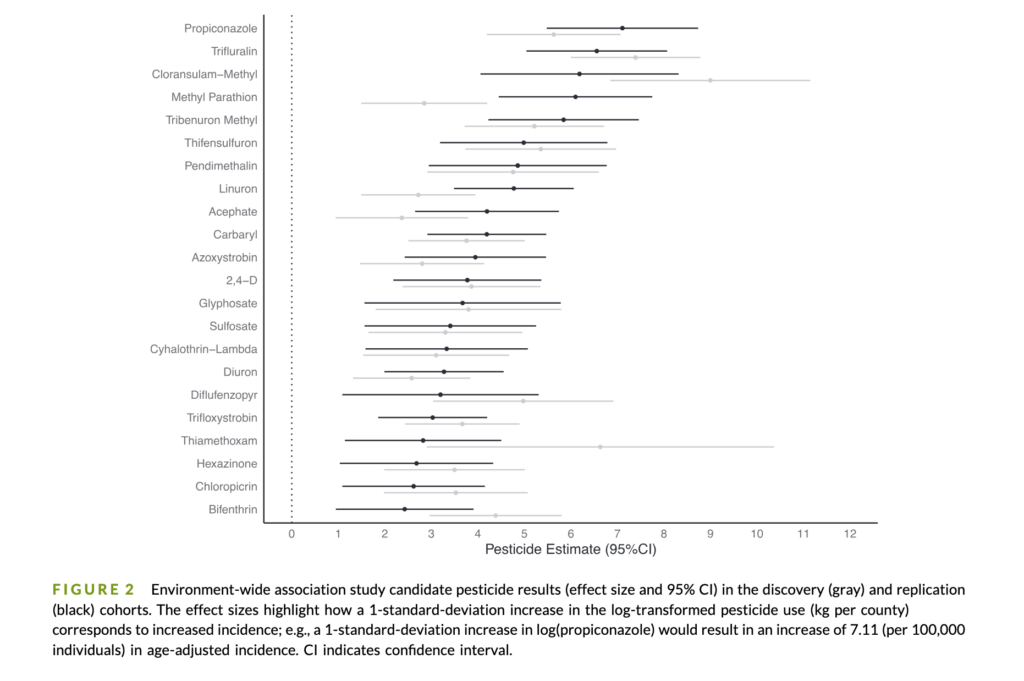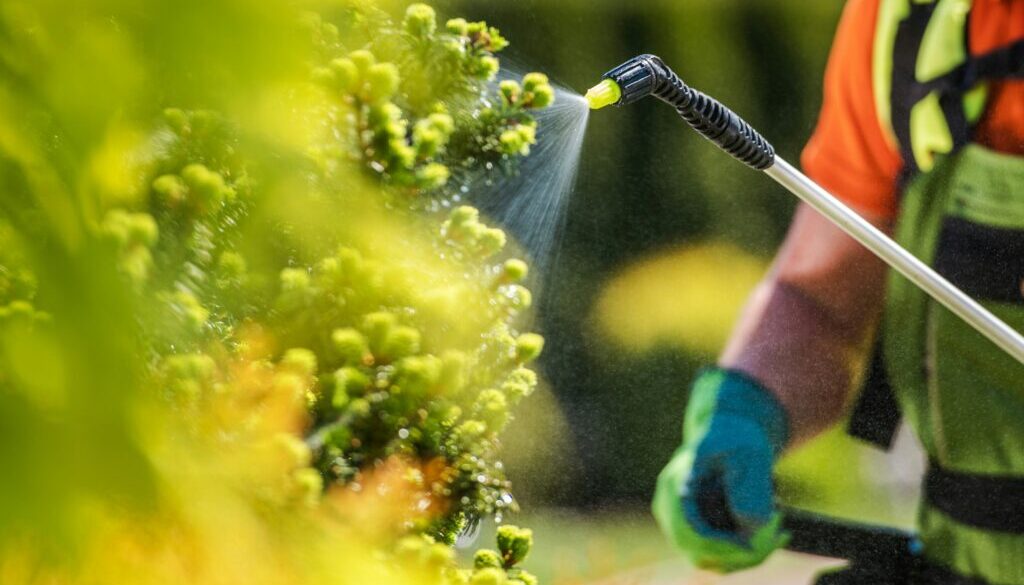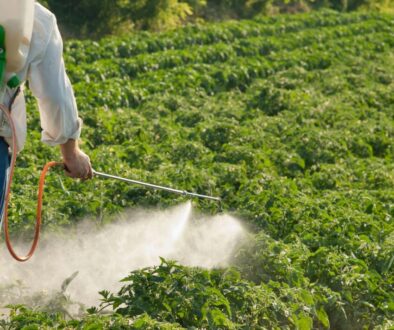Over 20 agrochemicals, including common herbicides, linked to prostate cancer
New research adds to evidence that several types of agrochemicals — including the widely used herbicides 2,4-D and glyphosate — may raise the risk of prostate cancer.
A study published November 4 in the journal Cancer examined the relationship between the quantity of pesticides used in US counties over certain spans of time and then the rates of prostate cancer 14 years later. Nearly two dozen of these chemicals were consistently associated with an elevated risk of the disease, which is the most common cancer in men, and is considered the second-most deadly.
The results suggest more research is urgently needed to further understand the role these chemicals may play in the development of this and other cancers, the authors wrote.
“Many pesticides have not been sufficiently studied for their potential carcinogenic effects, particularly in relation to prostate cancer,” said study co-author Simon Soerensen, a postdoctoral researcher at Stanford University.
The findings add to concerns about the health impacts of chronic exposure to pesticides, and are merely the latest in years of research to link chemicals used in farming with different cancers and other diseases.
The World Health Organization’s International Agency for Research on Cancer classifies 2,4-D as “possibly” carcinogenic to humans, for instance. And six other chemicals looked at in the study are currently classified as “potential human carcinogens” by the US Environmental Protection Agency (EPA). The EPA classifies the herbicide diuron in particular as a known/likely carcinogen.
The study also identified four chemicals that were linked to not just the incidence of prostate cancer, but to dying from it. These include three herbicides, known as cloransulam‐methyl, diflufenzopyr, and trifluralin, and an insecticide called thiamethoxam, which has been banned for outdoor use in the European Union due its toxicity to bees.
One of the herbicides consistently linked to prostate cancer in the paper was 2,4-D. This finding stands out because of how widely it’s used, said John Leppert, a urologist and researcher, also at Stanford.
The use of 2,4-D on farms has spiked in recent years as weed species have developed increasing resistance to other herbicides, such as glyphosate, the active ingredient in Roundup and other brands developed by the former Monsanto Co., prompting farmers to apply glyphosate alternatives.
The development of crops that tolerate being sprayed with 2,4-D accelerated use in recent years. There are now millions of acres of corn and soybeans planted in the US that are genetically modified to be resistant to 2,4-D. The chemical is also found in common backyard herbicidal products.
One 2022 study found that nearly-one third of the 14,395 participants had measurable levels of 2,4-D herbicide in their urine.
In the Cancer paper, the researchers looked at county-level use of scores of agrichemicals from 1997 to 2001, and then looked to see, for each chemical, if there appeared to be a link with cases of cancer in the county 14 years later, from 2011 to 2015. They did the same thing for a second period of time, looking at using 2002 to 2006 and cancer cases and deaths from 2016 to 2020.
All of the 22 chemicals were consistently associated with prostate cancer across time and space. The paper attempted to quantify these links by looking at how much a discrete increase in the use of any given chemical in a county compared to increased prostate cancer incidence there.
It found the strongest links for the herbicides trifluralin, cloransulam‐methyl, and tribenuronm; the fungicide propiconazole; and the insecticide parathion. (Parathion is a highly toxic organophosphate insecticide that has been banned in many if not most countries, including the United States.)
It found that a standard-deviation increase in the use of the herbicide trifluralin in counties, for example, was associated with seven additional cases of prostate cancer per 100,000 individuals.
Because prostate cancer is so common, and can be aggressive, it’s a “tremendous health concern” whose underlying environmental risk factors remain little understood, Leppert said.
“I think we need to be more aware of considering that what’s in the environment could be a contributor to a man’s risk of cancer,” he added.

The 22 chemicals identified include herbicides (2,4-D, glyphosate, trifluralin, cloransulam‐methyl, tribenuron, diflufenzopyr, diuron, hexazinone, linuron, pendimethalin, sulfosate, thifensulfuron) insecticides (parathion, thiamethoxam, acephate, bifenthrin, carbaryl, cyhalothrin-lambda), fungicides (propiconazole, azoxystrobin, trifloxystrobin), and soil fumigants (chloropicrin).
(Featured image by Getty Images for Unsplash+)




